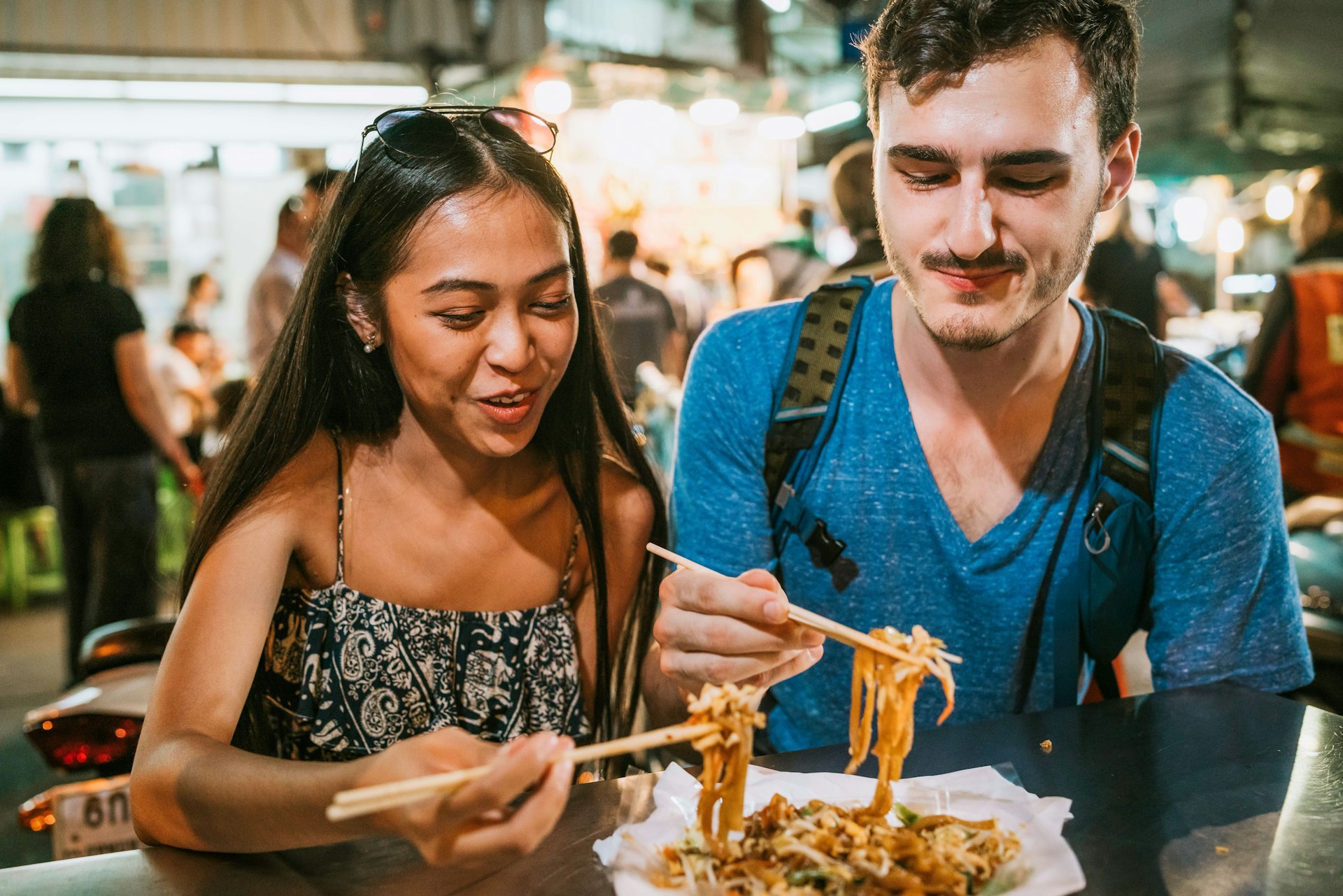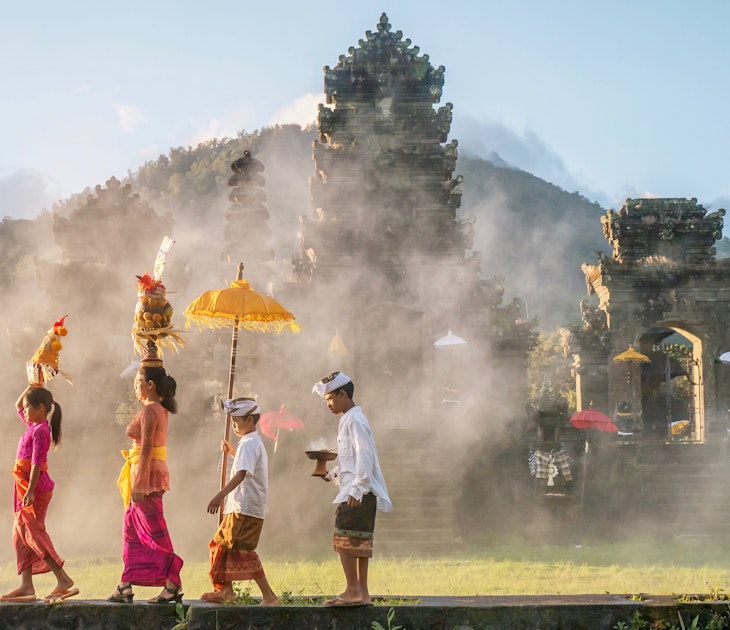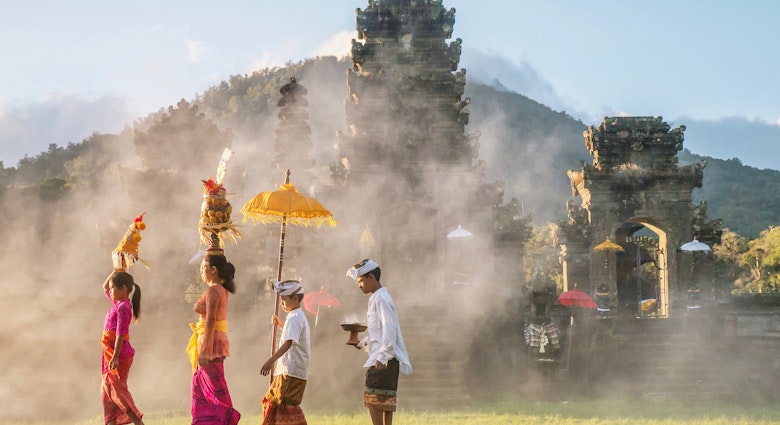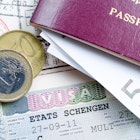Travelers looking for adventures on a shoestring flock to Thailand.
With its heady blend of pocket-friendly travel experiences, cultural surprises, easy transport, spicy-not-pricey food and one of the world’s friendliest backpacker scenes, Thailand could well be the perfect budget travel destination.
However, the cost of a trip can vary wildly depending on where you go and the levels of comfort you're looking for when you get here. Spend too much time in Bangkok, take lots of tours and drink lots of bottled beer, and you're looking at spending a whole lot more.
Here are our top tips for traveling further for less in Thailand.

1. Places to stay are cheaper in the low season
Prices for accommodations and transport shoot up from November to March, coinciding with the driest weather and travel-friendly temperatures. The July to September low season is the rainiest time of year; some ferry routes and island resorts close down completely, but accommodation prices drop significantly. Hotel rates also dip during the spring and fall shoulder seasons, which can be a rewarding time to visit without the winter crowds.
2. Air travel into Thailand can be surprisingly low
Bangkok is one of Asia’s cheapest destinations to reach by air, particularly if you come with Qatar Airways, Etihad or another Gulf carrier, but prices creep upwards during the peak winter season. If flights to Bangkok are looking costly, investigate flights to Singapore, Kuala Lumpur and other Asian hubs, and see if you can find a cheap connection to the capital on Air Asia or another budget carrier.
Alternatively, connect to Bangkok by train. Regular trains run from Johor Bahru – just over the causeway from Singapore – to KL, Butterworth (for Penang) and north along the isthmus to Bangkok for around US$80 one way. It’s one of Asia’s most enjoyable rail journeys.
3. Resist the taxis at the airports
Most new arrivals fly into Bangkok’s busy Suvarnabhumi International Airport, 30km (19 miles) east of Bangkok, though a few budget carriers still use Don Mueang International Airport near Chatuchak Weekend Market. At either hub, eager agents will try to talk you into expensive airport taxis.
Instead, take public transit; Suvarnabhumi has Airport Rail Link trains that connect with the downtown Skytrain and MRT network, and a free shuttle bus to a local transport terminus with cheap city buses into the center. Don Mueang has regular overground trains and slow but inexpensive local buses to the middle of Bangkok.
At airports all over Thailand, you can often find a cheap taxi ride by flagging down a cab on the highway outside the airport-terminal complex, avoiding airport charges. Just remember to check if any highway tolls apply for the journey into town.
4. Stay in homestays or hostels
Accommodation prices in Thailand have been climbing steadily for years, in line with rising standards. Many backpacker places are edging into boutique-hotel territory, with cafes, bars, wi-fi and pools, and the US$5 box rooms of old are a dying breed.
To keep a lid on costs, sleep in dorms; rates start around 250B. For not too much more, you can find basic rooms and bungalows with shared bathrooms and fans rather than A/C (or central air-conditioning instead of a unit in every room). If you're traveling with friends, sharing triple and quad rooms can be a great way to save money.
Camping can be astonishingly cheap, with rates at many national parks starting from 30B per person. Homestays are another inexpensive option in rural areas; rooms tend to be rustic but comfortable, and you get authentic home cooking and cultural immersion in the bargain. Also, look out for discounted rates at hostels and budget hotels via booking sites such as Booking.com and Agoda.

5. Skip internal flights and tourist minivans for local buses and trains
Even if you stick to budget airlines, flying internally in Thailand and making use of those oh-so-convenient tourist minivans will jack up your travel costs. Instead, use public buses or travel in second or third-class carriages on the trains.
If you don’t mind sleeping in a reclining seat, you can save the cost of a berth (and a hotel room) by taking a slow overnight train or overnight bus. Buy tickets directly from bus and train operators to avoid travel agent fees.
Buses run by the state transport company Baw Khaw Saw (BKS) are usually cheaper than private buses. Most bus stations have ticketing halls where all the companies advertise their destinations so that you can compare fares. Ordinary and express buses are cheaper (but less comfortable) than VIP buses or luxury VIP24 or VIP32 buses, named for the number of seats on board.
6. Take taxis or a sŏrng·tăa·ou instead of tuk-tuks
For local trips, regard tuk-tuks (motorized rickshaws) as a travel experience rather than a serious means of transport. Prices are routinely hiked for tourists, and trips often involve detours to commission-paying souvenir shops and other establishments. Sǎamláw – three-wheeled pedicabs – also work on a bargaining system, but they’re not too expensive for short hops.
A metered taxi is usually a more stable bet – just be aware that traffic jams can make even a short journey slow and expensive. Rideshares can be summoned through Grab and other apps, but you’ll often pay more than you would for a regular taxi. For trips around town (or from town to nearby villages), by far the cheapest option is the sŏrng·tăa·ou – a pick-up truck with benches that operates like a local bus.
7. It's cheap to rent a motorcycle or scooter, but ride carefully!
Renting a scooter or motorcycle is a remarkably cheap way to get around in Thailand, particularly for local exploring. In most traveler centers, you can pick up a ride for as little as 150B per day, and petrol costs around 40B per liter. Thailand has a shocking rate of traffic accidents, so ride cautiously and slowly and make sure liability insurance is included as part of the hire. It may not be enough to rely on your own travel insurance.

8. Eat at street stalls and night markets
If you find restaurant dining is eating through your stock of baht, look to street stalls and wandering hawker carts that are always gratifyingly inexpensive. Stick to busy stalls and avoid uncooked fruit and veg.
As dusk falls across Thailand, street corners, parking lots, boat jetties and station forecourts transform into bustling night markets, where some of the best food in town can be had for low prices. Indeed, grazing from pàt tai noodle stall to sà·dé (satay) stand to ðôm yam soup vendor is one of Thailand’s great pleasures. For a real bargain, seek out the food courts attached to bus stations and other transport hubs, where bowls of noodle soup and other tasty local snacks can be had for penny prices.
9. Expect a high tax on alcohol
Going out in Thailand can be surprisingly expensive because of the taxes on alcohol. Knocking back the bottles of Singha or Chang beer can easily double your meal bill, so sip slowly or do as locals do and share a bottle of Thai whiskey or rum (usually enjoyed with ice and soda or cola). If only a beer will do, Chang is usually cheaper than Singha.
10. There's rarely a cover charge at live music bars
For inexpensive evening entertainment, a trip to a live music bar gives a lot of bang for not many bahts. There’s rarely a cover charge, and most venues have a rotating line-up of bands playing technically adept covers of popular songs.
11. National parks have entry fees, and activities can be costly
Entry fees to Thailand’s many national parks are not too onerous – typically 200–300B – but they can add up. The big costs are usually associated with transport into national parks and organized activities such as guided hikes, boat trips and scuba diving. If you’re looking to save money, competition between operators keeps prices down at Khao Sok National Park and Khao Yai National Park.
Accommodations at national parks, on the other hand, are very reasonably priced, with bungalows going for 350-500B and tent spaces costing from 30B (US$0.90) per person. Tents are often available for rent for around 150B. Most national parks with accommodations also have basic canteens offering simple Thai dishes at budget prices.

12. Thailand’s minor monasteries are often free to visit
Thailand’s most famous monasteries – including Wat Pho and Wat Phra Kaew in Bangkok – charge pricey entry fees for tourists. If you’re watching the pennies, smaller monasteries are often completely free to visit, and they are arguably more interesting because of the absence of photo-snapping crowds. In any town you pass through, ask a local for tips on the most interesting wát in the area – there’ll always be something intriguing to see.
13. Hot spring treatments are cheaper than spas
Thailand’s spas are world-famous, and the sky is the limit when it comes to prices at the luxe end of the market. However, you can find therapeutic treatments for a song at dozens of natural hot springs dotted around the hills of northern Thailand.
Chiang Mai in the north is ringed by government-run hot spring complexes, where therapeutic baths and other treatments come at highly agreeable prices. At Pha Daeng National Park, access to the pools costs just 100B, and you can camp for 30B per person; entry prices are similar at San Kamphaeng Hot Springs.
14. Seek out economical Thai massages
Having a vigorously relaxing Thai massage is de rigueur on a trip to Thailand, and you can pay the earth at posh hotels and luxury spas. At the other end of the spectrum, you can enjoy a pocket-friendly pummeling from former convicts at Chiang Mai’s Vocational Training Centre of the Chiang Mai Women's Correctional Institution and Lila Thai Massage, where many graduates work full-time.
Alternatively, head to the massage pavilions on the grounds of Thai monasteries, where massages are performed by people trained in traditional Buddhist massage, as taught by the monks of Bangkok’s Wat Pho, the spiritual birthplace of Thai massage.
15. Thailand is one of the cheapest places to learn to scuba dive
Budget travelers can breathe easy – Thailand is one of the cheapest places in the world to learn to scuba dive. An open water dive certification course on Ko Tao will cost around 10,000B, and dives start from 1500B if you go in off the beach. While Ko Tao is the cheapest dive hub, other inexpensive spots include Ko Lanta and Ko Phi Phi.
16. Bring your own gear for free experiences
Every imaginable adrenaline activity is possible in Thailand, from canyoning and kiteboarding to bungee jumping, zip-lining and jungle trekking. However, prices can be steep, particularly for organized, tourist-oriented trips that include transport. If you want thrills at minimum cost, head to Railay near Krabi, Thailand’s favorite rock climbing playground, where epic limestone routes start right off the beach. There’s no charge to climb with your own gear (or it can be rented cheaply), and budget rooms are available at Hat Ton Sai. If you've got your own snorkeling gear, you can see the underwater world for free at beaches across Thailand.
A guide to daily costs in Thailand
- Basic guesthouse room: 500–1000B (US$15–30)
- Market/street-stall meal: 40–100B (US$1.20–3.00)
- Bottle of local beer: 80B (US$2.40)
- Organized tour or activity: from 1500B (US$45)
- Motorbike or scooter hire per day: 150–300B (US$4.50–9.00)












